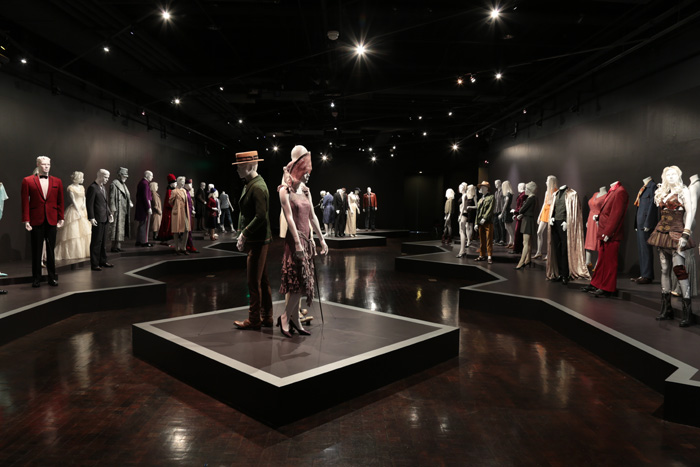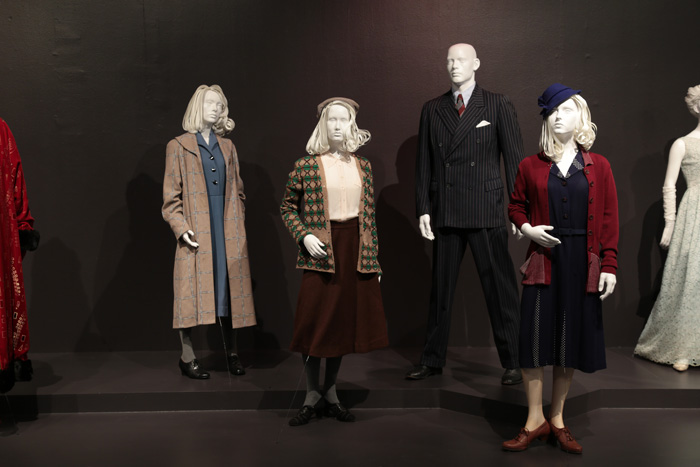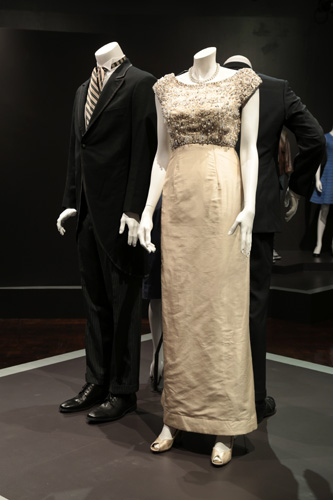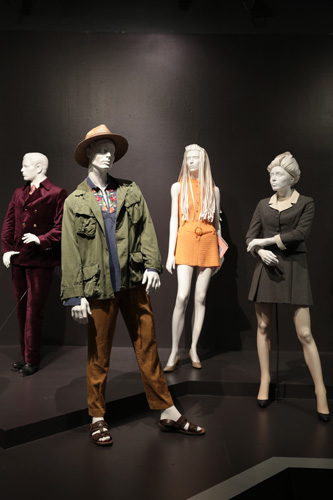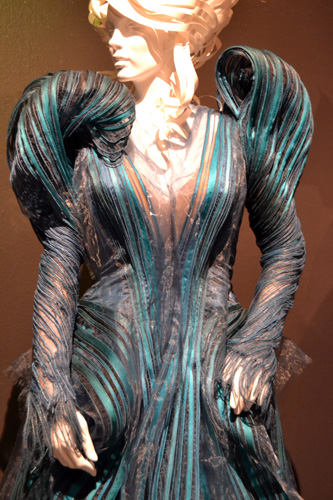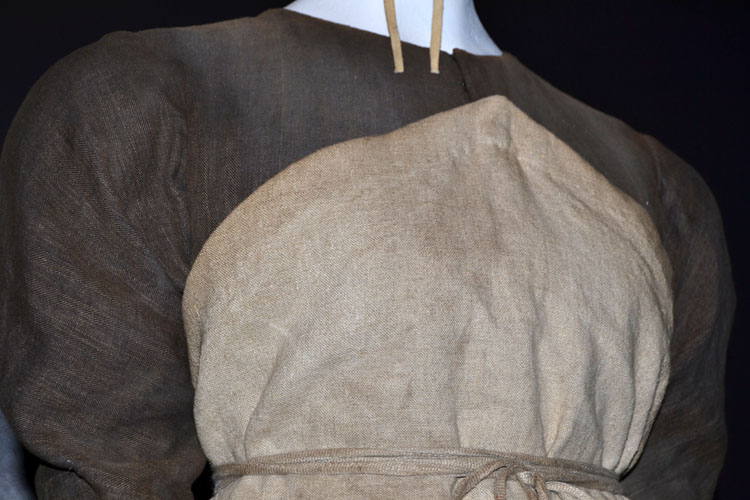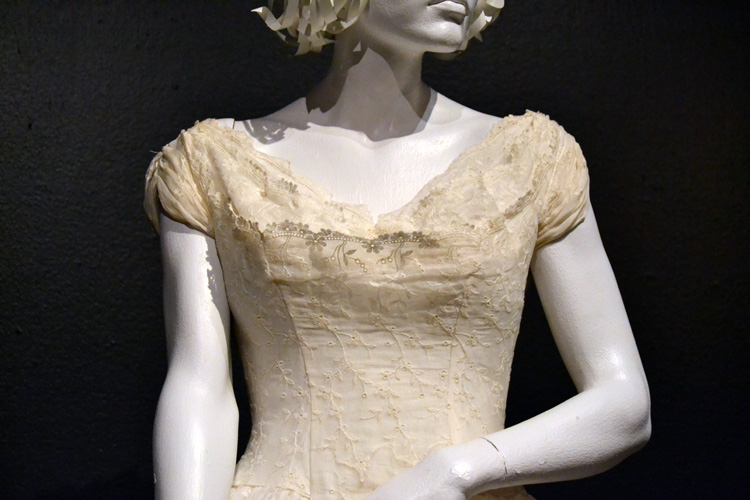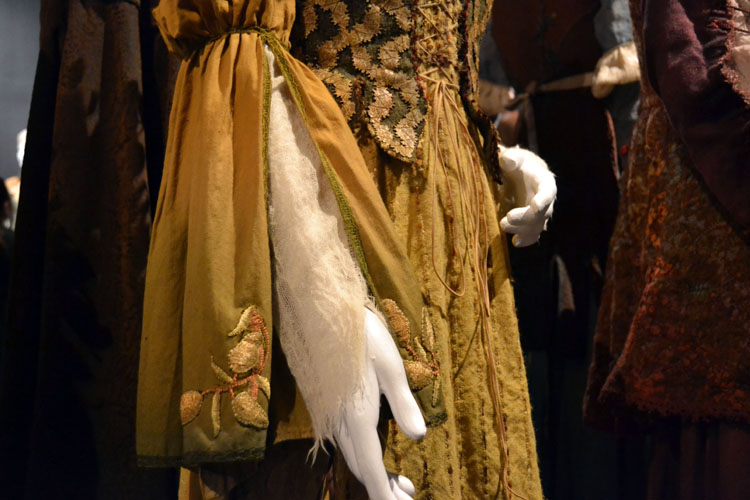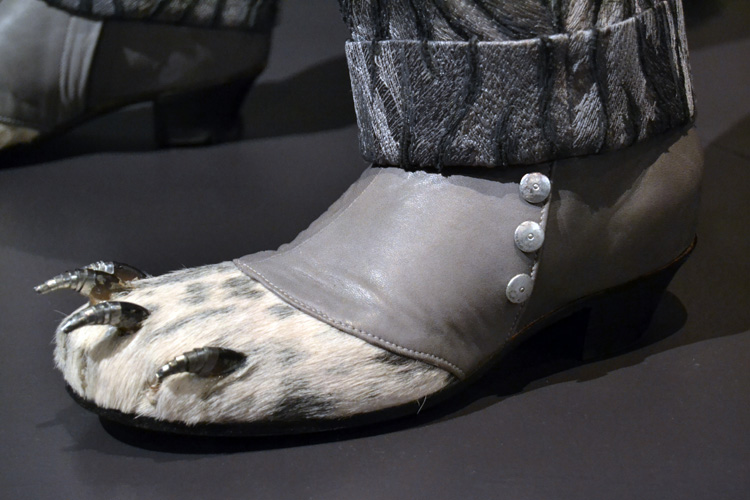The Art of Motion Picture Costume Design: A moment with Carter, Perez, and Bridges
Each year FIDM Museum brings us an opportunity to take a peek at the costumes from some of our favorite moves of that past year. All the costumes hold surprises when viewed from a few feet away and help us truly appreciate what these designers do. I had the opportunity to interview 3 wonderful and talented costume designers Ruth E. Carter (Selma), Salvador Perez (President of the Costume Designer’s Guild), and Mark Bridges (Inherent Vice). Each were overflowing with talent and design knowledge. Fashioned for the Geek covered specific topics about instinct and their design process, below are their highly intuitive answers.
Fashioned for the Geek: How has instinct played a role in your design process and when do you know to pull back?
Ruth E. Carter: I’m notorious for not stopping -- I’ve coined the phrase “too much" and I usually depend on my assistants to say "I like it" then I stop. Sometimes it is the director that says, "You know I think we are finished, I think that is it, less is more." I always try for less is more -- I am an artist and I connect to any kind of art that I am working on, and I never want to let to go. I want to find out more about it and examine what it needs -- and sometimes it doesn’t need anything. But we always feel like it's never finished -- it’s the bane of the artist -- it is never finished until someone comes along and snatches it from you and says, "It's done dammit! Give it to me.”
It's hard to let go of the whole film -- when the film is done you want to go back in there -- crawl up on the screen and take an eraser to it. You can’t so there is a point where things happen by circumstances. The directors and actors -- everyone processes, they take it, they do it, it’s done for them, it’s good, and it’s enough. We didn’t have much money on Selma, and we didn’t have the greatest of circumstances. People didn’t have doubles and triples so when they started sweating we couldn’t change their clothes. This is the fabric of our film -- you can’t say when it is enough it says it to you and just have to say, “Okay, I will walk away.” I may not feel good for a little while but I will walk away.
Salvador Perez: I think all great costume design is instinct -- you have to feel it and you have to be inspired. There are technical things that you do, if you are doing a period movie but especially in contemporary design. Contemporary design is still costumes, the actor comes in a t shirt and funky jeans we have to make them into a lawyer, a doctor, or scientist. It’s all about that and I have to say I go with my gut -- I know a lot of times people try on 30 things for a fitting and I do that too because producers want to see it but I know in my gut what the costume is, the color, the fit, how the character looks in it, and how they move in it. I think instinct is the most important trick of costume design.
Mark Bridges: It is very funny that you ask about instinct, besides the years of experience were you learn to run a department and understand your gut reaction. You can see tragedy coming around the corner -- if you don't prepare something in time or enough choices. There have been a few times were I haven’t dealt with something -- I think it’s all good and we are getting close to the scene and then I finally pay attention and think, "You know what we need more options for that." Low and behold the stuff that we went out and got was the stuff that actually worked.
I’ve learned to listen to the very tiny voice in my head saying, "That might not work.” It is a constant thing of standing back and assessing it -- using your mind’s eye to imagine the whole scene as a whole. A lot of times the costume will work in an office, car, daytime, nighttime, and I have to think about those choices for each of those environments. Doing one big scene day after day you have to rely on instinct and experience a lot -- a lot!
I feel like a lot of the designing I do -- I can't put my finger on why I do it, it’s emotional because I’m invested in the script, and I know because of fittings what the actors like and what their preferences are. I try to what I call “listen between the lines” to what the actors are saying. I don't just override what they are saying, I’m really listening to what they are saying and what they are not saying. I try to assess all of that when making decisions because sometimes we just met and they don't wait to be terribly forthright as far as offending me, and sometimes they are not quite as comfortable as they say they are. I’m constantly looking at the paralanguage and thinking -- so it's my instinct and also having logged on a million hours in fitting rooms with actors -- I can sniff it out, so that is instinct too.
[Concerning Martin Short’s suit] that is the case of my instinct is --I better make two suits. You don't want to end up there I day of and, "Here's the suit. I hope you like it!" Your constantly vetting yourself and checking yourself, taking pictures and showing the director but [Thomas] Pynchon describes something as being ultra violet -- ultra violet blue is really intense and doesn’t photograph really well. Blues are really sensitive, it seemed really strong, like my scenes and how things have to be composed, it’s like an artist choosing colors when I pick the color of costumes, it felt like it might be too strong, and already putting a purple suit on Martin Short kind of redundant.
I found another color that felt period to me and felt pleasing to me and had a great photogenic quality. I made two suits, we didn’t have all the money in the world but I felt it was important enough to prove this option for my director, and that is part of your instinct too. My instinct, "Maybe we don't want Pynchon, maybe we need something a little softer." On the day Paul [Thomas Anderson] and I both agreed and choose that color -- I think it works beautifully in the wooden paneled office that it takes place at and the young girl that is with him wears a yellow paisley dress. Things work out but if I had shown up with just one, I known I would have wished I made two choices -- so that is another thing -- you know yourself and you kind of know the director, and your instinct is to give the director a choice.
FG: When you begin a project do you have an overall vision or does it evolve as you go?
SP: I think that was are constantly [evolving]. I would like to think that when I start a show do I end up with the exact same vision -- no cause you are inspired every day, and a lot of time you will have a concept that you will start to play with and it doesn’t work. You will have to scrap it and start all over again, but for instances in the new Pitch Perfect movie -- Elizabeth Banks, I’ve known her for years, worked together many times, and I’ve worked with her when she was an actor, director, producer -- so when she decided to director she brought me on to design the first one.
In our meetings we were talking about how we wanted the girls to be the American version of K-pop -- the Korean pop groups so we had to modify it -- it had to be more American version. When we were talking about the design process for the rival groups, they were European, German and going through all the research there was a lot of fishnet. She said, “I love the fishnet, let's incorporate fishnet into their designs.” I took that thing and if you see the movie every time you see them on camera, they have fishnet in different way. Sometimes it’s a shredded body suit with fishnet underneath, sometimes it’s fishnet shirts, sometimes shorts with fishnet leggings -- but I used fishnet. It was just that one guideline of inspiration, so in that situation those costumes from beginning to end never changed.
The Bellas, their rock stars and every time they had a different outfit on. We had a color theme but we expanded on it, "Will they always wear gold, well one number is black and gold.” Towards the end we brought it down, so there is, the design process evolves and what you think you are starting off with and what you end up with can be night and day.
MB: I’ll read the script and get a direction and research as I see a lot of images -- then light bulb, “This will be a cute idea.” Sometimes you are not even looking for stuff and you find things, like Joaquin [Phoenix] wears this gold suit as disguise, and you see him tucking his hair under a short wig – and I was looking for an article about a band and on that page was advertisement for something called the Establishment Wig, which was advertised to men at that time so they could cover up their long hair. [In a time] when short hair really counts, job interviews, meeting her parents, things like that -- so I was looking at an article about this band Pearls Before Swine, and I end up finding the Establishment Wig and I was like, "We got to do the Establishment Wig on Doc."
It’s really more organic, like slowly we turn -- step by step you get an idea. It's not like I’m going do it all in purple, it doesn’t end up like that. It ends up more like jigsaw puzzle where you kind of putting little pieces together and finding your way to making it be a cohesive whole. Because it is all filtered through me or filtered through the [Thomas] Pynchon characters it already had a cohesiveness -- my taste is there and what I think a level of quality is there -- 25 years of film design is there and you just never know where it is going to take you.
FG: As a minority how has that shaped your experience in this industry?
RC: In this industry people automatically want to put you with films of color, every time there is a Tyler Perry film people always say, "Didn’t you do it? Did you do House of Pain? Did you do it?" Every black thing that comes out, I didn't do it! I did Ty Cobb, I did The Best of Me -- that has been the hardest thing, just because I’m a women of color. Do the clothes say that it should be worn by a person of color? I don't see a label that says or has to be designed by -- and that has been the struggle. I feel that we are all colleagues: we all love the art, we all approach it in similar ways, we do the research, we have the conversation, we love the process, we all can do it, they can do a Selma just like I can do sometimes else.
SP: I’m Mexican and I’m from Fresno, California. Raised in the capital of the world -- my father was a mechanic, my mom was a seamstress, and I have not to my knowledge had a barrier. I’ve done a variety of films from African American to contemporary. I’ve done one Latin based movie so it hasn't affected the way I think people expected to be -- and I think the ultimate that I am now the elect President of Costume Designers Guild, and I’m probably the first Latin Present that I know of.
If you look at it there is Soyon An who did Step Up and there is Ruth Carter who did Selma – [within] costume design I don’t think there is that sort of class distinction. I think that if you are talented and you are going to work -- obviously you need that break, so have to have a little more than your average person, but I knew how to sew so that was my in. I made sure I was the best and I think in any sort of situation where you are competing against other designers -- you have to be the best.
Fashioned for the Geek got some much good information the complete interviews with each costume designer will be posted at a later time.
Thank you to Ruth E. Carter, Salvador Perez, and Mark Bridges for their time. FIDM Museum for putting on the event and Liz Hernandez for support and questions.
Art of Motion Picture Costume Design Annual Exhibition
Where: FIDM Museum & Galleries
919 S. Grand Avenue, Los Angeles, CA 90015
From: February 10, 2015 - April 25, 2015
Hours: Tuesday-Sunday 10 A.M. – 5 P.M.
Admission: Free
